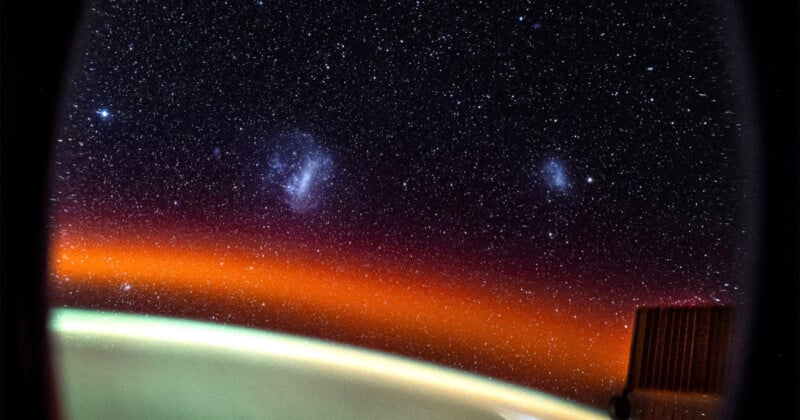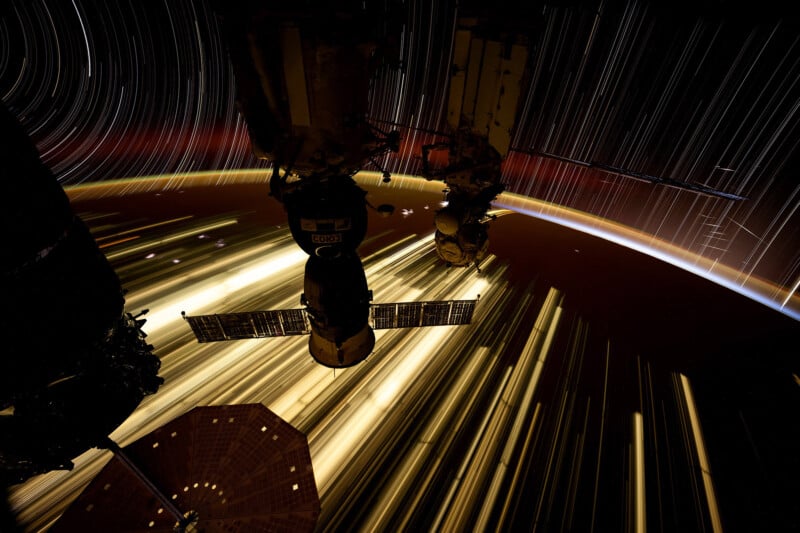Astronaut Takes Epic Photo of Two Satellite Galaxies From Onboard the ISS

Photographer and active NASA astronaut Don Pettit has captured a long exposure photo of two satellite galaxies that neighbor the Milky Way from his vantage spot onboard the International Space Station (ISS).
The Large Magellanic Cloud and Small Magellanic Cloud are some 200,000 light-years away but orbit the Milky Way Galaxy, home to Earth’s solar system.
To capture the images, Pettit brought a homemade tracking system that allows him to take long-exposure photographs. The ISS moves at 17,500 miles per hour, meaning a tracking system is required to lock onto a celestial target.
During his first mission to the ISS in 2002, Pettit invented a barn door tracker from “stuff laying around” which is a device that counteracts orbital motion in space allowing photographers to capture sharp images of cities at night.
“Before I made this barn door tracker on the station you would do a handheld picture of cities at night with maybe a one-second exposure and they’d always be blurry particularly if they were done with a telephoto lens,” Pettit told PetaPixel in an interview last year. “This was the first time it allowed anybody to get sharp images of cities at night.”

Capturing neighboring galaxies isn’t the only epic space shot Pettit has been taking. On December 3, he shared a star trail photo on his X page.
“I think these [star trail photos] are a blend of both science and art,” he writes on the platform formerly known as Twitter.
“This one shows atmospheric airglow, yellow-green at 120km and the fainter upper red at 400km, star trails moving in arcs on the left and straight lines on the right, Starlink satellites flashing sunlight off their solar panel, the Cygnus cargo vehicle (left), my Soyuz vehicle (center), and the Russian laboratory module MLM (right).”
Pettit also captured a unique view of Starlink satellites orbiting Earth as they flash sunlight toward the ISS, an image that can only be captured in an orbital environment.
Cosmic fireflies. Actually, these are Starlink satellites momentarily flashing sunlight towards @Space_Station. pic.twitter.com/rOKUdLlP3f
— Don Pettit (@astro_Pettit) December 1, 2024
Pettit, 68, is the second-oldest NASA astronaut to ever go into orbit and is the space agency’s oldest active astronaut.
Image credits: NASA/Don Pettit